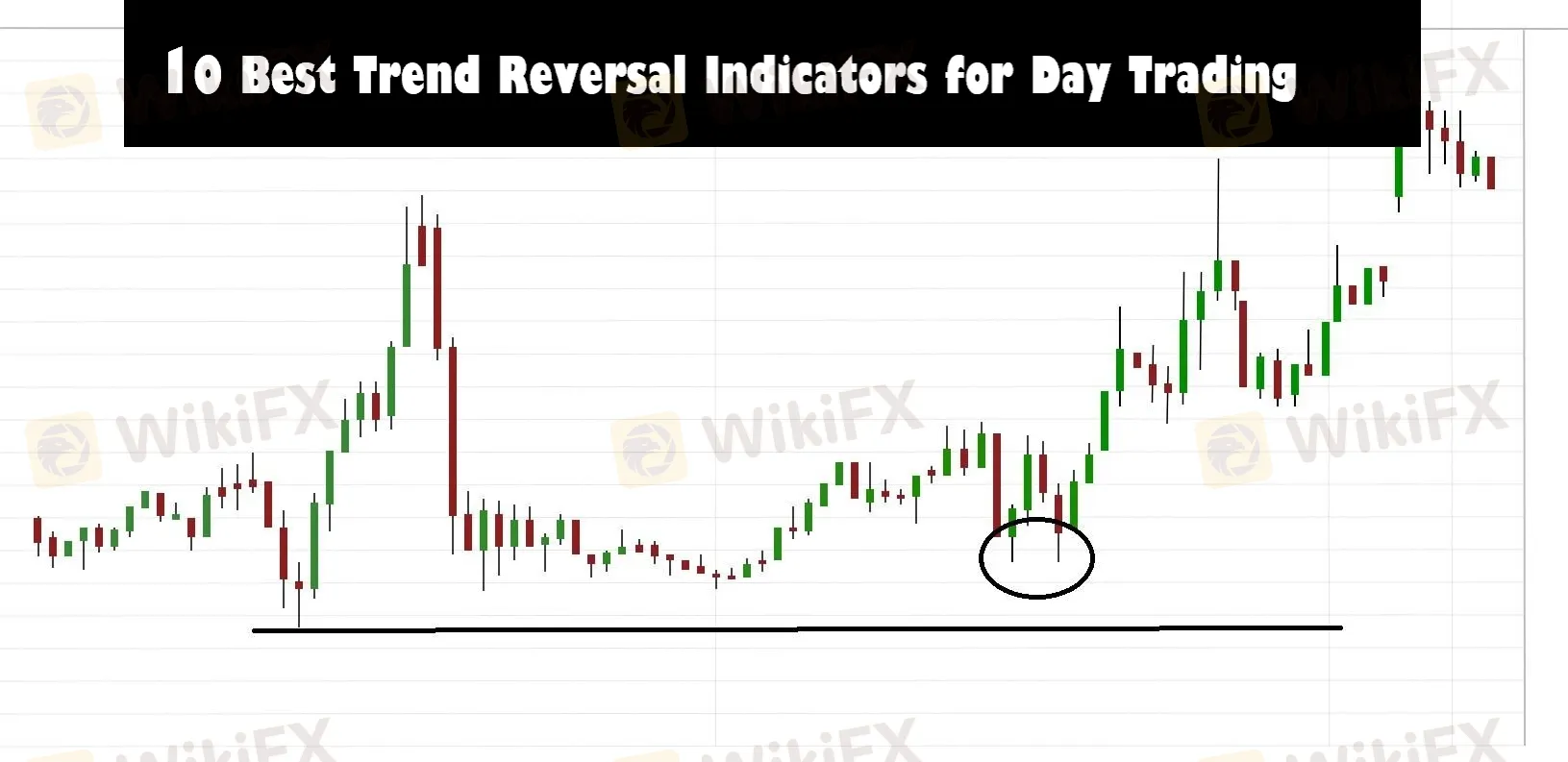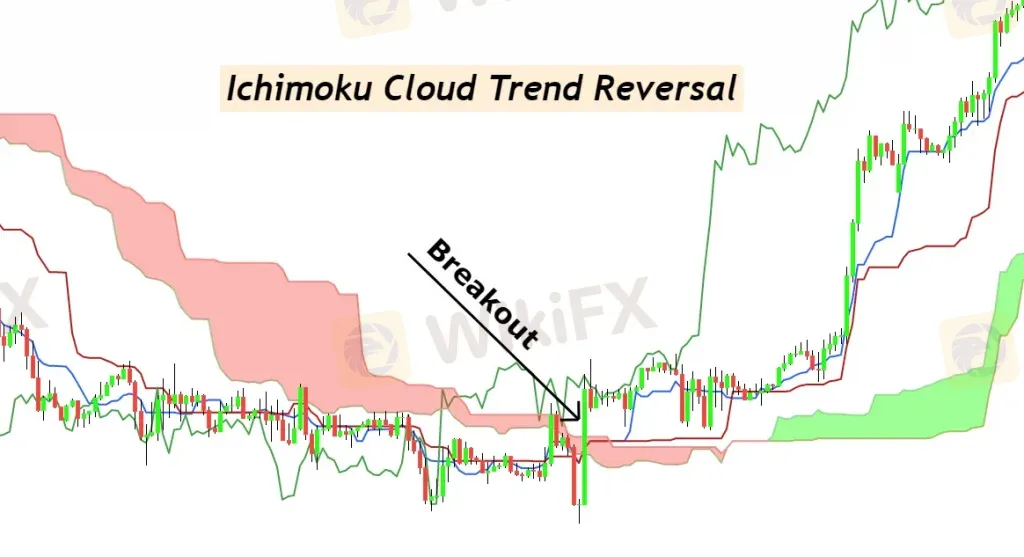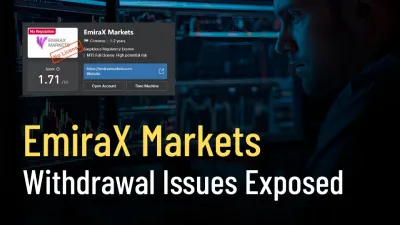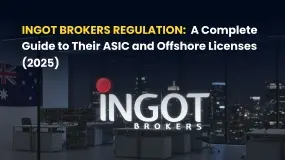简体中文
繁體中文
English
Pусский
日本語
ภาษาไทย
Tiếng Việt
Bahasa Indonesia
Español
हिन्दी
Filippiiniläinen
Français
Deutsch
Português
Türkçe
한국어
العربية
10 Best Trend Reversal Indicators for Day Trading
Abstract:Day trading, a strategy involving the quick buying and selling of forex, stocks or other trading assets within a single trading day, can be both exhilarating and challenging. Central to navigating this fast-paced environment is the ability to predict trend reversals. This article explores the 10 best trend reversal indicators that are indispensable for day traders. These tools help traders see through the market's complexity, giving them an edge in making profitable moves. Understanding and applying these indicators can be the key to unlocking significant profit potential in the financial market.
Day trading, a strategy involving the quick buying and selling of forex, stocks or other trading assets within a single trading day, can be both exhilarating and challenging. Central to navigating this fast-paced environment is the ability to predict trend reversals. This article explores the 10 best trend reversal indicators that are indispensable for day traders. These tools help traders see through the market's complexity, giving them an edge in making profitable moves. Understanding and applying these indicators can be the key to unlocking significant profit potential in the financial market.

Moving Average Convergence Divergence (MACD)
MACD stands out as a foundational tool in a trader's arsenal, offering insights into market momentum through the relationship between two moving averages. It's the divergence or convergence of these averages that signals potential market reversals. The MACD histogram further refines these signals, providing a visual representation of the momentum's strength or weakness, thus alerting traders to impending trend changes.
Relative Strength Index (RSI)
RSI, a momentum oscillator, gauges the speed and change of price movements. By identifying overbought or oversold conditions—typically above 70 (overbought) or below 30 (oversold)—RSI alerts traders to possible reversal points. This indicator is particularly useful in volatile markets, helping traders to make decisions based on perceived market extremes.

Stochastic Oscillator
This momentum indicator compares a particular closing price of a stock to a range of its prices over a certain period. Its value oscillates between 0 and 100, with readings below 20 indicating an oversold condition and above 80 signaling an overbought condition. The crossover of the %K (fast stochastic) and %D (slow stochastic) lines can signal a trend reversal, making the stochastic oscillator a favorite among day traders.

Bollinger Bands
Bollinger Bands provide a dynamic perspective on price volatility. Comprising three lines—the moving average, an upper band, and a lower band—this indicator adjusts itself with market conditions. A price touching or breaking through the bands can signal a reversal, especially when accompanied by other indicators.

Fibonacci Retracement Levels
Fibonacci retracement levels are a tool for identifying potential support and resistance levels following a market movement. These levels, derived from the Fibonacci sequence, help traders anticipate retracements in the price. Recognizing these can be crucial for entering or exiting trades at the most opportune moments.

Ichimoku Cloud
The Ichimoku Cloud offers a comprehensive view of the market by integrating multiple indicators into one chart, providing insights into support and resistance levels, momentum, and trend direction. A price moving above or below the cloud can indicate a trend reversal, offering a clear signal for traders.

Average Directional Index (ADX)
ADX measures the strength of a trend, helping traders distinguish between strong trends that are likely to continue and weak trends that may reverse. A rising ADX indicates a strong trend, while a falling ADX suggests a weakening trend, potentially signaling a reversal.

Volume-Based Indicators
Volume is a key component in confirming trend reversals. Indicators like On-Balance Volume (OBV) and the Volume Oscillator provide insights into market sentiment by comparing volume to price movements. An increasing volume during a price reversal strengthens the signal's reliability.

Parabolic SAR
Designed to identify potential reversals in the market price direction, the Parabolic SAR (Stop and Reverse) places dots on a chart that indicate potential reversals. A shift in the position of the dots—from above to below the price or vice versa—signals a potential trend reversal.

Candlestick Patterns
Certain candlestick patterns, such as the hammer, engulfing patterns, and doji, are widely recognized for their ability to signal imminent trend reversals. These patterns, when observed at the end of a downtrend or uptrend, can provide early warnings of a change in the market's direction.

Combining Indicators for Effective Day Trading
Regarding day trading, relying on a single indicator to guide all your trading decisions can be likened to navigating a complex road network with just one street sign. To enhance decision-making accuracy and elevate trading strategies, savvy traders combine multiple indicators. This synthesis not only refines signal quality but also provides a more holistic view of market movements. Let's explore how combining key indicators such as MACD, RSI, and Bollinger Bands can unlock new levels of insight, featuring real-world examples for a richer understanding.
Imagine you're observing a stock that has been in a downtrend. The MACD shows a bullish divergence—where the price hits lower lows, but the MACD forms higher lows. This divergence suggests weakening downward momentum. To confirm this bullish signal, you turn to the RSI, which moves above its 30 level, indicating that the stock is moving out of the oversold territory. The concurrent bullish signals from both MACD and RSI offer a strong indication that a trend reversal is imminent, presenting a potential buying opportunity.
Psychological Aspects of Using Trend Reversal Indicators
In the high-stakes world of day trading, where fortunes can be made or lost in moments, the psychological impact of using trend reversal indicators cannot be overstated. These tools are not just mathematical formulas but are intertwined with the trader's emotions, biases, and decision-making processes. By delving into examples, we can uncover the rich psychological landscape that traders navigate when employing these indicators.
For instance, you're closely monitoring the RSI and MACD on your favorite stock. The RSI dips below 30, signaling an oversold condition, and at the same time, the MACD shows a bullish crossover. The excitement builds. This is the moment you've been waiting for - a potential trend reversal. But here lies the psychological trap: the euphoria of spotting what seems like a surefire signal can cloud judgment, leading to premature entries without adequate confirmation or risk management.
A common psychological pitfall is confirmation bias—the tendency to favor information that confirms your preconceptions or hypotheses while disregarding contradictory evidence. For instance, if you've had success with a particular pattern or indicator in the past, you might overemphasize signals that align with your expectations, ignoring signs of a false reversal. This bias underscores the importance of rigorous backtesting. By objectively reviewing historical data and outcomes, you can temper the inclination to see patterns where none exist, grounding your strategies in empirical evidence rather than wishful thinking.
Practical Tips for Implementing Indicators
In the fast-paced world of day trading, the effective implementation of trend reversal indicators can be a game-changer. These indicators not only signal potential market turns but also guide strategic entry and exit points. However, their utility hinges on the trader's ability to set up, apply, and continuously refine their use. Below are enriched and detailed strategies for leveraging these tools, ensuring you derive the most value from your trading endeavors.

Selecting the Right Indicators for Your Trading Style
Every trader has a unique style, risk tolerance, and market philosophy. Begin by assessing your trading objectives and the types of assets you trade most frequently. If you prefer fast-moving markets, indicators like the Stochastic Oscillator and RSI might suit your needs due to their ability to signal quick changes in momentum. For those who trade more volatile stocks, Bollinger Bands can provide insights into price volatility and potential reversal points.
Optimizing Indicator Settings for Market Conditions
Indicators are not one-size-fits-all tools. Their settings need to be adjusted based on prevailing market conditions and the asset being traded. For instance, adjusting the MACD's parameters to reflect a shorter timeframe can provide more responsive signals in a fast-moving market. Conversely, lengthening the periods for the ADX might filter out market noise in more stable conditions, highlighting stronger trends.
Combining Indicators for Confluence
Leveraging multiple indicators can provide a more robust framework for decision-making. For example, you might use Fibonacci retracement levels to identify potential support and resistance areas and then wait for a confirming signal from the MACD or RSI before making a trade. This multi-layered approach helps in filtering out false positives, increasing your confidence in the trade.
Backtesting and Paper Trading
Before implementing new indicators or settings in your live trading sessions, backtest them against historical data to assess their effectiveness. Paper trading, or simulated trading, offers a risk-free environment to fine-tune your strategy, allowing you to make adjustments based on real-time feedback without the financial risk.
Monitoring and Reviewing Trades
Keep a detailed log of all trades, noting the indicators used, the rationale behind each trade, and its outcome. This practice can reveal patterns in your trading, highlight which indicators work best under specific conditions, and help you identify areas for improvement.
Staying Informed and Adapting
The financial markets are constantly evolving, with new trends and trading strategies emerging regularly. Stay informed by engaging with trading communities, attending webinars, and following market analysis by experienced traders. This ongoing education will help you adapt your strategy to new market conditions and trading technologies.
Conclusion
In conclusion, these ten indicators are essential for day traders. By providing early signals of market reversals, they allow traders to position themselves advantageously, maximizing their profit potential while minimizing risks. They also offer powerful insights for day traders, allowing them to navigate the complexities of the market with greater confidence and efficiency. By understanding and applying these tools, traders can enhance their ability to predict trend reversals, optimizing their trading strategies for maximum profitability.
FAQs
What makes a good trend reversal indicator?
A good trend reversal indicator provides timely and reliable signals, has a reasonable level of accuracy, and complements other indicators and trading strategies.
How to choose the right indicators for your trading style?
Select indicators that align with your trading strategy, risk tolerance, and market understanding. It's crucial to practice with different indicators to find the combination that works best for you.
Can these indicators be used for swing trading?
Yes, while primarily designed for day trading, these indicators can also be effective for swing trading, offering insights into longer-term market movements.
How to avoid false reversal signals?
Combining multiple indicators can help filter out false signals. Additionally, implementing a solid risk management strategy can protect against the impact of incorrect predictions.
Disclaimer:
The views in this article only represent the author's personal views, and do not constitute investment advice on this platform. This platform does not guarantee the accuracy, completeness and timeliness of the information in the article, and will not be liable for any loss caused by the use of or reliance on the information in the article.
Read more

Grand Capital Doesn’t Feel GRAND for Traders with Withdrawal Denials & Long Processing Times
The trading environment does not seem that rosy for traders at Grand Capital, a Seychelles-based forex broker. Traders’ requests for withdrawals are alleged to be in the review process for months, making them frustrated and helpless. Despite meeting the guidelines, traders find it hard to withdraw funds, as suggested by their complaints online. What’s also troubling traders are long processing times concerning Grand Capital withdrawals. In this Grand Capital review segment, we have shared some complaints for you to look at. Read on!

EmiraX Markets Withdrawal Issues Exposed
EmiraX Markets Review reveals unregulated status, fake license claims, and withdrawal issues. Stay safe and avoid this broker.

ADSS Review: Traders Say NO to Trading B’coz of Withdrawal Blocks, Account Freeze & Trade Issues
Does ADSS give you plenty of excuses to deny you access to withdrawals? Is your withdrawal request pending for months or years? Do you witness account freezes from the United Arab Emirates-based forex broker? Do you struggle to open and close your forex positions on the ADSS app? Does the customer support service fail to respond to your trading queries? All these issues have become a rage online. In this ADSS Broker review article, we have highlighted actual trader wordings on these issues. Keep reading!

INGOT Brokers Regulation 2025: ASIC vs Offshore License - What Traders Must Know
Explore INGOT Brokers regulation in 2025: Compare their ASIC and Seychelles FSA licenses, understand trader protection levels, and learn about potential risks in this detailed guide.
WikiFX Broker
Latest News
Consob Targets Political Deepfake “Clone Sites” and Unlicensed Platforms in Latest Enforcement Round
WikiEXPO Global Expert Interviews: Gustavo Antonio Montero: ESG in Finance
2 Malaysians Arrested in $1 Million Gold Scam Impersonating Singapore Officials
Is FXPesa Regulated? Real User Reviews & Regulation Check
Fraud Mastermind Zhimin Qian Sentenced to 11 Years for $6.6 Billion Bitcoin Ponzi Scheme
Almahfaza Broker – 2025 Review: Safe or Scam?
Uniglobe Markets Review 2025: A Complete Guide to an Unregulated Broker
INZO Broker No Deposit Bonus: A 2025 Deep Dive into Its Offers and Risks
Exness Broker Expands in South Africa with Cape Town Hub
Global Guide to Finding Forex IBs/Brokers — Share Your Pick and Win Big!
Currency Calculator



